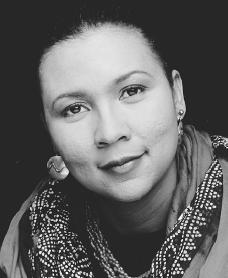| Daisy Bates |
Summary:
Many lessons are not taught inside school walls while students sit militaristically in lines of desks. Instead, some of the most important lessons that we learn take place in our homes, on porches, at kitchen tables, or in the basement of churches. These lessons move beyond the square root of 100 or the process of photosynthesis of plant-life. Instead, women like Daisy Bates and Ella Baker, both women who were part of the American Civil Rights Movement toward racial justice, held meeting spaces in their homes for children to discuss "the day's events, develop coping strategies, do their homework, and eat a snack" (James, 1993, p. 48). These spaces became spaces where empowerment and political activism took place.
In her essay, James (1993) explores the role of mothering and othermothing in African and African American families and communities. James as well as other authors share that mothering and othermothering is needed to nurture the community and future community members. James focuses more so on the role of other mothers than on actual biological mothers, and defines othermothers, which originates in West Africa and continues through slavery, as "those who assist blood mothers in the responsibilities of child care for short- to long-term periods, in informal or formal arrangements" (p. 45).
According to James (1993), othermothering plays a large role in African American communities today. However, it seems that it is not as common as it was previously as American society becomes less close knit and as African Americans become more indivisualistic and less community centered because of Western cultures heightened focus on modernistic approaches to living.
.Despite the obvious benefits of othermothering in various communities; the woman's ability to "provide analyses and/or critiques of conditions or situations that may affect the well-being of her community" as well as the "catalyst in the development and implementation of strategies" to eliminate or minimize harm in the Black community, Stanley (1993) identifies challenges faced by women who serve as othermothers within their very own communities (p. 50). These challenges, a lack of recognition and a linear and patriarchal notion of power, often attempt to minimize the role of women in African American communities, but the work of Stanley demonstrates that othermothers were powerful in their own right.
| Ella Baker |
Reflection:
James' work is central to my research on the intergenerational learning that takes place in hip-hop communities in Detroit because the relationships that I have chosen to examine are those had by adults in the movement and their younger female mentees. Some of the questions that seem relevant are as follows: How do mentors of female youth activists act as other mothers; are they nurtures? How do these adult women empower and teach younger women who are part of Detroit's hip-hop community? Where did these adult women learn to take on this nurturing role? Are there any tensions within the community and among the women (young and old) surrounding this role?

